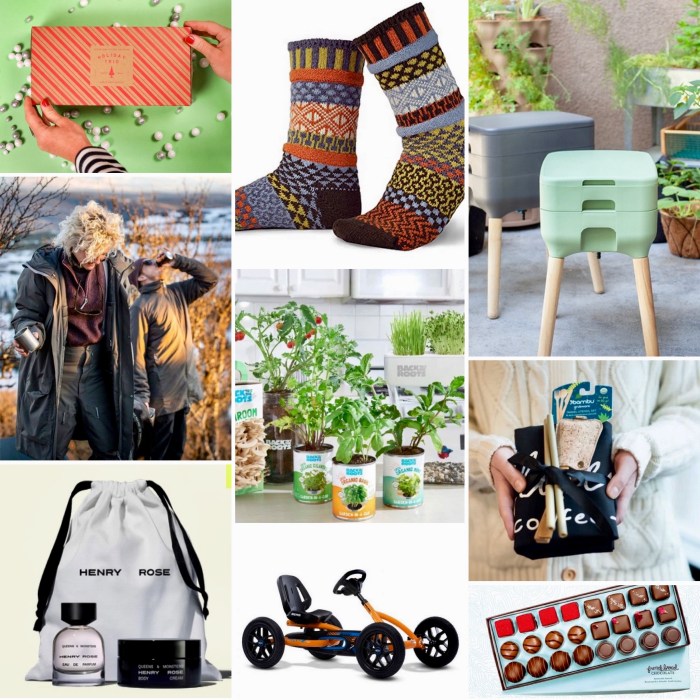Defining Eco-Friendly Accessories
Eco-friendly accessories for sustainable living – Eco-friendly accessories are items designed and produced with a strong emphasis on sustainability, minimizing their environmental impact throughout their entire lifecycle. This contrasts sharply with conventional accessories often made from unsustainable materials and employing environmentally damaging production methods. Sustainability in this context involves responsible sourcing of materials, ethical labor practices, reduced waste generation, and minimized carbon emissions during production, packaging, and transportation.
Sustainable Materials in Accessory Production
Eco-conscious accessory manufacturers prioritize materials with minimal environmental impact. Common choices include recycled materials like plastic bottles repurposed into bags or jewelry, organic cotton for clothing accessories, and rapidly renewable bamboo for various applications. These materials reduce reliance on virgin resources and lessen the demand for resource-intensive production processes.
Comparing Eco-Friendly and Conventional Accessories
The key difference lies in the environmental footprint. Conventional accessories often utilize synthetic materials derived from petroleum, contributing to pollution and greenhouse gas emissions. Their production processes frequently involve harmful chemicals and high energy consumption. In contrast, eco-friendly accessories aim to reduce or eliminate these negative impacts, prioritizing renewable resources and minimizing waste.
Types of Eco-Friendly Accessories
The range of eco-friendly accessories is vast and encompasses numerous categories. The following table provides a categorized overview.
| Category | Examples | Materials | Unique Selling Proposition |
|---|---|---|---|
| Jewelry | Recycled metal necklaces, upcycled bead bracelets, wood earrings | Recycled metals, reclaimed wood, organic beads | Unique designs, ethically sourced materials, durability |
| Bags | Hemp tote bags, recycled plastic shopping bags, organic cotton backpacks | Hemp, recycled plastic, organic cotton | Durability, versatility, reduced plastic consumption |
| Clothing Accessories | Organic cotton scarves, bamboo socks, recycled wool hats | Organic cotton, bamboo, recycled wool | Comfort, breathability, support for sustainable agriculture |
| Other Accessories | Cork wallets, recycled rubber phone cases, plant-based leather belts | Cork, recycled rubber, plant-based leather | Unique textures, durability, reduced reliance on animal products |
Lifecycle of an Eco-Friendly Accessory: Example – Bamboo Sunglasses
| Stage | Impact |
|---|---|
| Raw Material Sourcing | Sustainable bamboo harvesting with minimal environmental disruption. |
| Manufacturing | Low-energy production processes, minimal water usage, reduced waste generation. |
| Packaging | Recycled and biodegradable packaging materials. |
| Transportation | Optimized shipping routes to minimize carbon emissions. |
| End of Life | Biodegradable or easily recyclable materials. |
Unique Selling Propositions of Eco-Friendly Accessories
Eco-friendly accessories offer several unique selling propositions. Consumers are increasingly drawn to brands that align with their values, prioritizing sustainability and ethical practices. The unique designs, durability, and reduced environmental impact of these accessories provide a compelling value proposition.
Sourcing Sustainable Materials
Ethical sourcing is paramount in the creation of eco-friendly accessories. This involves ensuring fair wages and safe working conditions for producers, often through fair trade partnerships. It also necessitates responsible harvesting and processing of materials, minimizing environmental damage.
Challenges and Solutions in Sustainable Material Sourcing
Challenges include the higher cost of sustainable materials compared to conventional options and the limited availability of certain resources. Solutions involve collaborations between brands, farmers, and suppliers to develop sustainable supply chains and innovative material alternatives.
Examples of Brands Using Sustainable Materials
Several brands exemplify successful sustainable material sourcing. Patagonia, for example, uses recycled materials extensively in its clothing lines. Other brands focus on specific materials like organic cotton or recycled ocean plastics, showcasing commitment to sustainability.
Production and Manufacturing Processes
Sustainable manufacturing processes for eco-friendly accessories emphasize minimizing environmental impact. This includes reducing energy consumption, water usage, and waste generation. Processes often incorporate renewable energy sources and efficient waste management systems.
Comparing Sustainable Manufacturing Methods
Different manufacturing methods have varying levels of sustainability. For instance, hand-crafted methods often have a lower environmental footprint than mass production, although scalability can be a challenge. The choice of manufacturing method depends on the specific accessory and its production scale.
Sustainable Manufacturing Process: Example – Recycled Plastic Bag
- Collection and sorting of used plastic bags.
- Cleaning and shredding of the plastic.
- Melting and extrusion of the recycled plastic.
- Molding and shaping into the desired accessory design.
- Finishing and quality control.
Packaging and Transportation
Eco-friendly packaging minimizes waste and prioritizes recycled or biodegradable materials. Sustainable transportation methods, such as utilizing cargo ships or trains instead of air freight, reduce carbon emissions associated with delivery.
Innovative Packaging Solutions
Companies are increasingly adopting innovative packaging solutions, such as using recycled cardboard, compostable materials, or minimal packaging designs. These strategies reduce material consumption and waste generation.
Marketing and Consumer Awareness

Effective marketing strategies are crucial for promoting eco-friendly accessories and raising consumer awareness of sustainable living. This involves highlighting the environmental benefits and ethical production processes behind the accessories.
Communicating the Story of Sustainable Production
Transparency is key. Brands should clearly communicate the materials used, the production processes, and the social and environmental impact of their accessories. Storytelling can effectively connect with consumers and build brand loyalty.
The Future of Eco-Friendly Accessories: Eco-friendly Accessories For Sustainable Living

Emerging trends include the increased use of innovative bio-based materials, advancements in recycling technologies, and a growing focus on circular economy models. Technology plays a vital role in optimizing production processes and reducing waste.
Future Impact and the Role of Technology
Eco-friendly accessories are poised to significantly impact the fashion and accessory industry. Technology will drive innovation in material science, manufacturing processes, and supply chain management, promoting greater sustainability and reducing the environmental footprint of the industry.
Illustrative Examples
The following examples illustrate the diversity and potential of eco-friendly accessories.
Example 1: Recycled Glass Bead Necklace, Eco-friendly accessories for sustainable living

- Design: A delicate necklace featuring intricately crafted beads made from recycled glass.
- Materials: Recycled glass, ethically sourced metal clasp.
- Production: Handcrafted by artisans using traditional techniques, minimizing energy consumption.
Example 2: Organic Cotton Tote Bag
- Design: A durable and stylish tote bag suitable for everyday use.
- Materials: 100% certified organic cotton.
- Production: Ethically produced in a fair trade facility, using low-impact dyes and minimal water consumption.
Example 3: Upcycled Denim Jeans Jacket
- Design: A unique and stylish jacket created from repurposed denim jeans.
- Materials: Upcycled denim, recycled buttons and zippers.
- Production: Minimalist design and upcycling techniques reduce material consumption and waste.
Visual Representation of an Eco-Friendly Accessory Production Process (Example: Bamboo Sunglasses)
The process begins with sustainably harvested bamboo, which is then carefully cleaned and cut to size. The bamboo pieces are shaped and polished using low-energy tools. Eco-friendly lenses are carefully fitted, and the frames are assembled using plant-based glue. Finally, the sunglasses are packaged in recycled cardboard.
Sustainable Packaging Options
- Recycled Cardboard Packaging: Durable, easily recyclable, and readily available.
- Compostable Packaging: Made from plant-based materials that decompose naturally, reducing landfill waste.
- Minimalist Packaging: Reduces material consumption by using only the necessary packaging elements.
Concluding Remarks
Ultimately, the adoption of eco-friendly accessories is not merely a trend; it’s a crucial step towards a more sustainable future. By making informed choices and supporting brands committed to ethical and environmentally responsible practices, consumers can actively contribute to a healthier planet. The journey towards sustainable living is a collective one, and the increasing availability and appeal of eco-friendly accessories signifies a significant move in the right direction. The future of fashion lies in its ability to integrate sustainability without compromising style or quality, and eco-friendly accessories are leading the charge.
